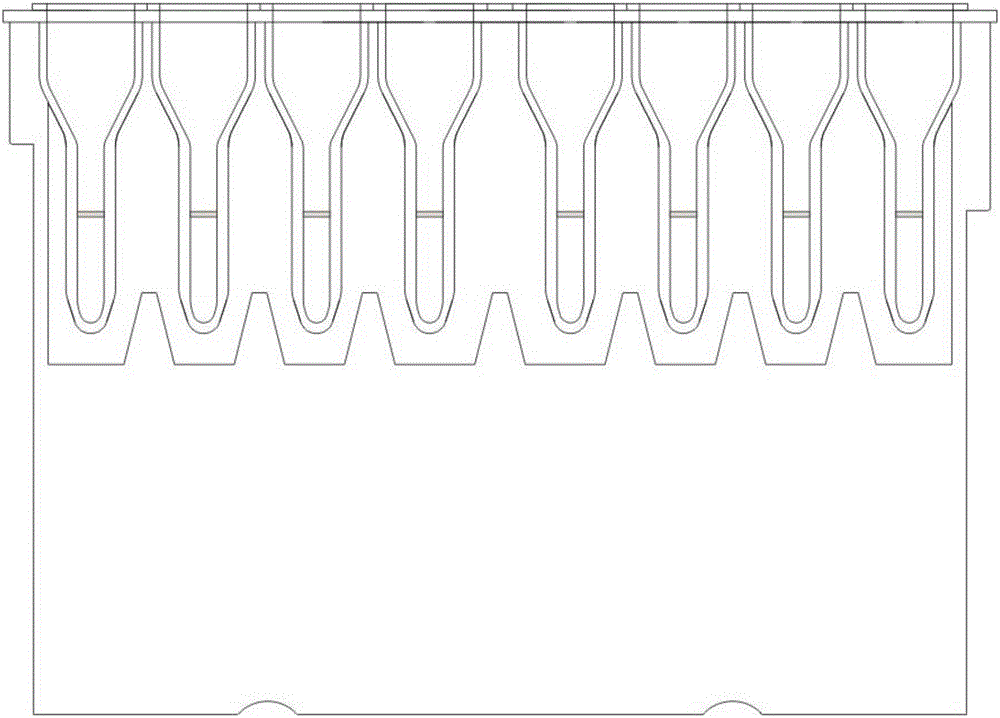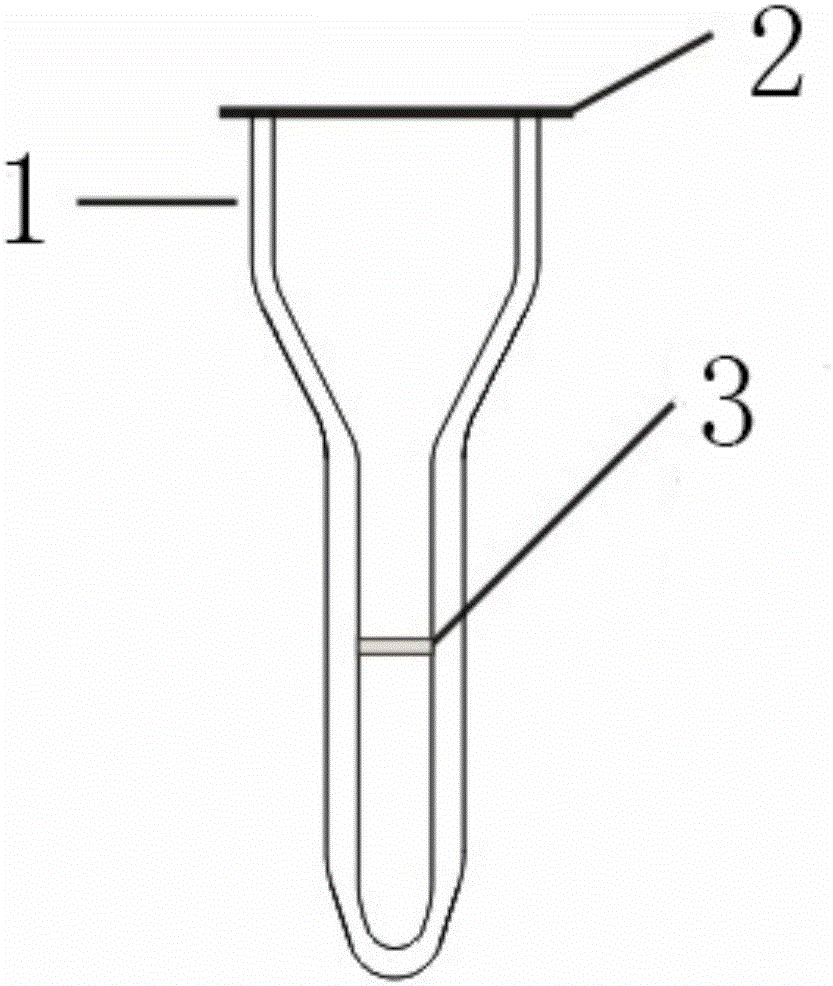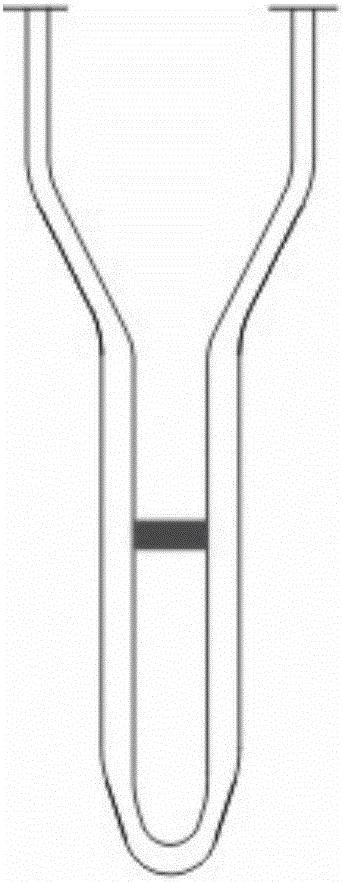Blood type detection card based on microporous membranes and blood type detection system
A technology of detection system and microporous membrane, which is applied in blood type detection system and blood type detection card field to achieve the effects of low cost, convenience for medical operators, and improvement of work efficiency
- Summary
- Abstract
- Description
- Claims
- Application Information
AI Technical Summary
Problems solved by technology
Method used
Image
Examples
Embodiment 1
[0056] [Example 1] Preparation of test card
[0057] Step 1. A processing method for a microporous membrane, comprising the following steps:
[0058] (1) Basement film imaging: polyethersulfone, nylon, polypropylene, polyethylene, polyethylene terephthalate, polycarbonate, polytetrafluoroethylene, polyvinylidene fluoride with a thickness of 6-50 μm can be used , polytetrafluoroethylene dispersion resin, polyurethane, polyvinyl chloride, polyimide, glass fiber membrane, mixed cellulose, organic silicon membrane is a base membrane;
[0059] (2) Irradiation: choose a heavy ion beam with an energy of 1-500 MeV and a current intensity of 0.1 nanoampere-10 microamperes to irradiate the basement membrane from one side, and the irradiation time is 0.1 seconds to nine hours;
[0060] (3) Sensitization: Utilize an ultraviolet lamp with a wavelength of 200-365nm to irradiate the irradiated basement film, the power of the ultraviolet lamp is 50-2000 watts, the distance between the lamp a...
Embodiment 2
[0065] [Example 2] Preparation of detection card supporting reagents: anti-A reagent, anti-B reagent, anti-D reagent, anti-human IgG reagent, anti-C3d reagent, anti-human IgG+C3d reagent, anti-A1 reagent, anti-C reagent, anti-c Reagent, Anti-E Reagent, Anti-E Reagent
[0066] (1) Preparation of Antibody Diluent
[0067] Weigh Na 2 HPO 4 12H 2 O 0.715g, KH 2 PO 4 0.408g, NaCl 1.75g, EDTA-2Na 2.0g, BSA10g, PEG6000 0.5g, sucrose 40g and NaN 3 0.1g, fully dissolved in purified water to 1000ml, and stored at 2-25°C.
[0068] (2) Selection of antibodies
[0069] Anti-A monoclonal antibody titer ≥ 128.
[0070] Anti-B monoclonal antibody titer ≥128.
[0071] Anti-D monoclonal antibody titer ≥64.
[0072] Anti-human IgG antibody titer ≥ 50.
[0073] Anti-C3d antibody titer ≥ 50.
[0074] Anti-human IgG+C3d antibody titer ≥50.
[0075] Anti-A1 antibody titer ≥ 50.
[0076] Anti-C antibody titer ≥50.
[0077] Anti-c antibody titer ≥ 50.
[0078] Anti-E antibody titer ≥...
Embodiment 3
[0092] [Example 3] Positive typing experiment
[0093] (1) Label the test card, and every 4 microcolumn tubes are 1 serving. Set 1-4 microcolumn tubes as tube A, tube B, tube D, and tube Ctl. respectively. Each test card can detect 2 people.
[0094] (2) Add anti-A reagent to tube A, anti-B reagent to tube B, anti-D reagent to tube D, and antibody diluent to tube Ctl, 50 μl per tube.
[0095] (3) Add 4% erythrocyte suspension diluted with normal saline to 1-4 microcolumn tubes successively, 10 μl per tube.
[0096] (4) Put the card into a medical centrifuge and centrifuge at 800rpm for 2 minutes, 1500rpm for 3 minutes, and take out the visual judgment result.
[0097] (5) Result judgment
[0098] Red blood cells agglutinate on the surface of the microporous membrane, which is a positive result;
[0099] Red blood cells condense at the bottom of the microcolumn tube, which is a negative result;
[0100] The results of blood type determination are shown in the table below:...
PUM
| Property | Measurement | Unit |
|---|---|---|
| pore size | aaaaa | aaaaa |
| thickness | aaaaa | aaaaa |
Abstract
Description
Claims
Application Information
 Login to View More
Login to View More - R&D
- Intellectual Property
- Life Sciences
- Materials
- Tech Scout
- Unparalleled Data Quality
- Higher Quality Content
- 60% Fewer Hallucinations
Browse by: Latest US Patents, China's latest patents, Technical Efficacy Thesaurus, Application Domain, Technology Topic, Popular Technical Reports.
© 2025 PatSnap. All rights reserved.Legal|Privacy policy|Modern Slavery Act Transparency Statement|Sitemap|About US| Contact US: help@patsnap.com



